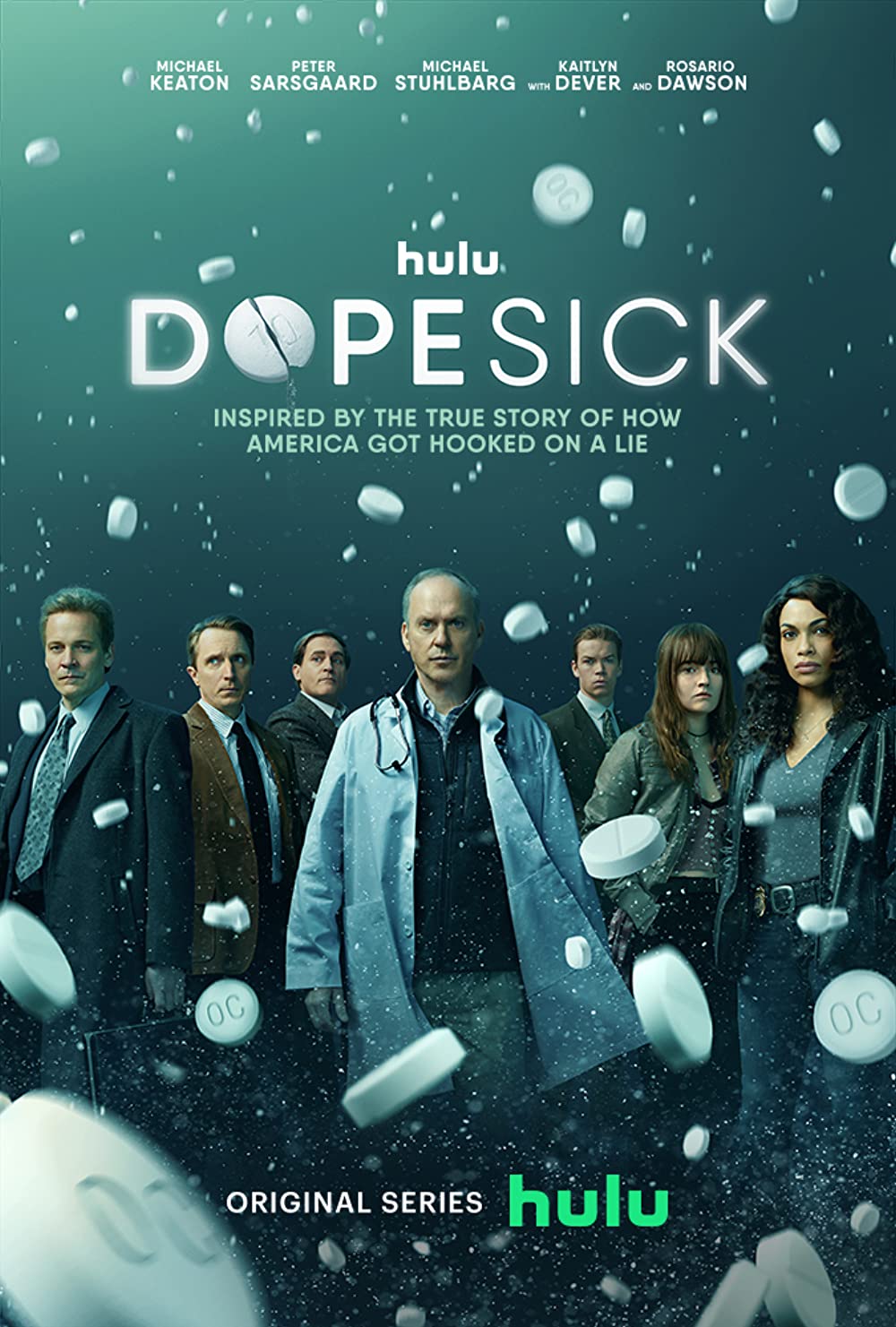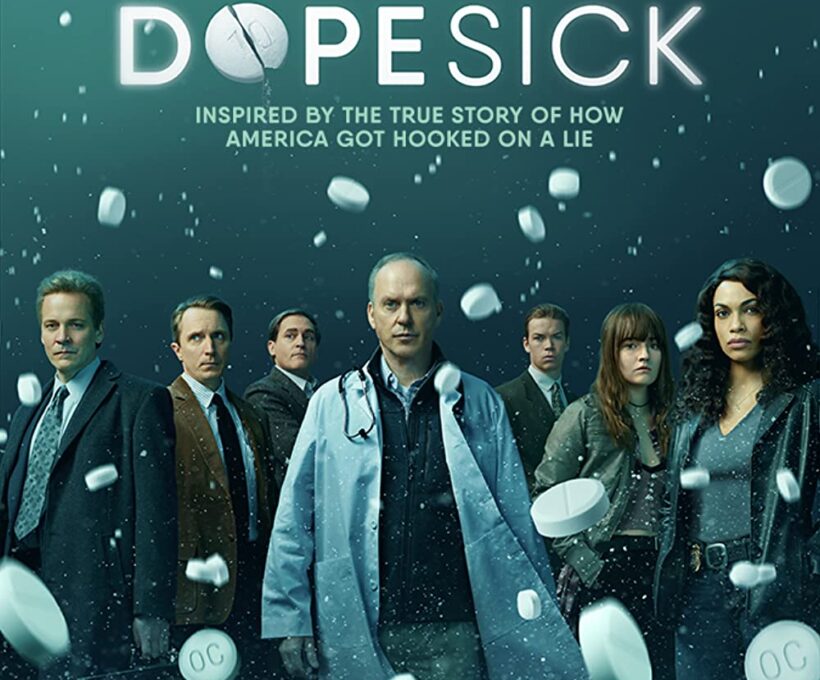Danny Strong – creator
John Goldwyn Productions, 20th Century Fox Television – production companies
Release date – Oct 13, 2021
Run time – 8 hours, 12 minutes
Seen as streamed on Hulu
According to the art:
To adapt Beth Macy’s expansive book about the opioid crisis to the format of a dramatic series, the creator, Danny Strong, had to limit his scope around the fiendish Purdue Pharma sales and marketing practices and the people they affected directly.
Synopsis:
The eight-part TV miniseries, Dopesick, is a nonfiction, scripted drama inspired by Beth Macy’s nonfiction book of the same title (which I cover here). The creator, Danny Strong, was a writer of all but one episode, director of two, and an executive producer of them all. Beth Macy served as an executive producer and contributed to the writing and updated the reporting.
In a Kaiser Health News (KHN) panel discussion about the series with Danny Strong, Beth Macy, and three KHN staff members, Strong said his original goal “was to dramatize all this, was to create a clear record of what Purdue Pharma did.” But when Macy joined, his goal expanded “to show the victims and to hopefully redefine the stereotype of addiction…[and] ultimately our goal was to show a path forward.”
The miniseries conforms to these goals. Across the eight episodes, the drama mostly swirls around the direct connections among Purdue Pharma, one physician, one particular patient (and family), one small town in coal mining country, a Drug Enforcement Agency (DEA) investigator, and a U.S. Attorney (Western District of Virginia). In hewing to Strong’s original goal of portraying Purdue Pharma’s responsibility for igniting and fanning addiction to its product OxyContin® (oxycodone HCl), the drama reaches its climax when the company agrees to criminal charges for named executives and a financial settlement in 2007.
Different episodes touch on other goals about the stigma associated with addiction and access to medication-assisted treatments. While Strong met his goals, he acknowledges the real-life drama didn’t end with the 2007 settlement. He previews what was to come: Purdue Pharma redoubling its sales efforts, the addiction crisis worsening over the subsequent fourteen years, and the continuing efforts to bring Purdue Pharma and its owners (the Sackler family) to their knees.
Analysis:
Viewers coming to this series thinking it’s a comprehensive documentary version of Macy’s book will be unsatisfied. It’s a drama, albeit inspired by the first third of Macy’s book and shaped by public and leaked documents acquired up to and through the time of filming. Some of the characters were taken from the book as well (e.g., Purdue Pharma executives, government officials, medical professionals, advocates). Many of them represent composites of individuals from Macy’s book (e.g., local physicians, addicted individuals and family members, town residents and officials). Some seem exaggerated, if it’s possible to exaggerate anything relating to the worst drug addiction epidemic in U.S. history.
To adapt to the format of a dramatic series, Strong had to limit his scope. He sets the series around the fiendish Purdue Pharma sales and marketing practices and the people they affected directly. Macy’s book is more expansive and encompasses commercial and illicit supply chains; clinicians and first responders (hapless and heroic); law enforcement and criminal justice; national and local government health agencies; treatment centers; advocates; and news media. Strong’s choice is to focus on the damage discernable from the linear relationship between Purdue Pharma practices and affected local communities up until 2007. That’s worth something, but falls short in depicting the multi-dimensional aspects of the opioid addiction epidemic and the havoc it wreaks on communities of all sizes all over the country that Macy covers in her book.
Macy has stayed on the trail since her book and the miniseries. She has completed a follow up book, Raising Lazarus, which will be published in October, 2022. Based on an interview with Macy published in the November 4, 2021 Richmond Magazine, Macy says, “Dopesick was about the problems, this one is about the solutions.”
Also:
The series attracted the interest of established and accomplished actors such as Michael Keaton (also an executive producer), Peter Sarsgaard, and Phillipa Soo among others.
A discussion of how Dopesick the book, Dopesick the miniseries, The Empire of Pain, and Demon Copperhead compare with one another and how one may be preferred over the others or the order in which they should be approached is the subject of the episode, Getting Dopesick: Four Angles on the Opioid Crisis, on the podcast, The Clinic & The Person.
A version of this post appears in the NYU Literature, Art and Medicine Database.
.




